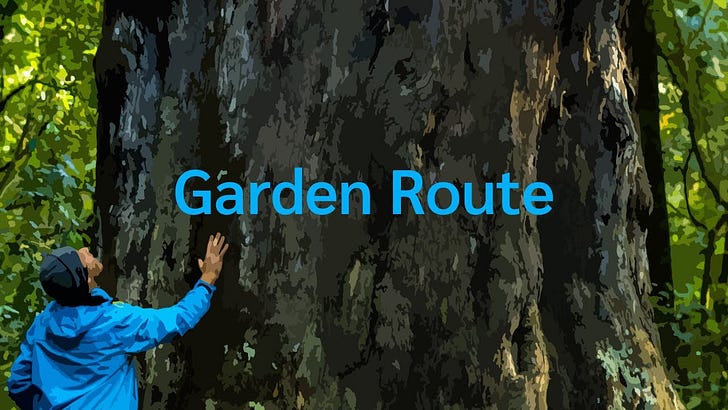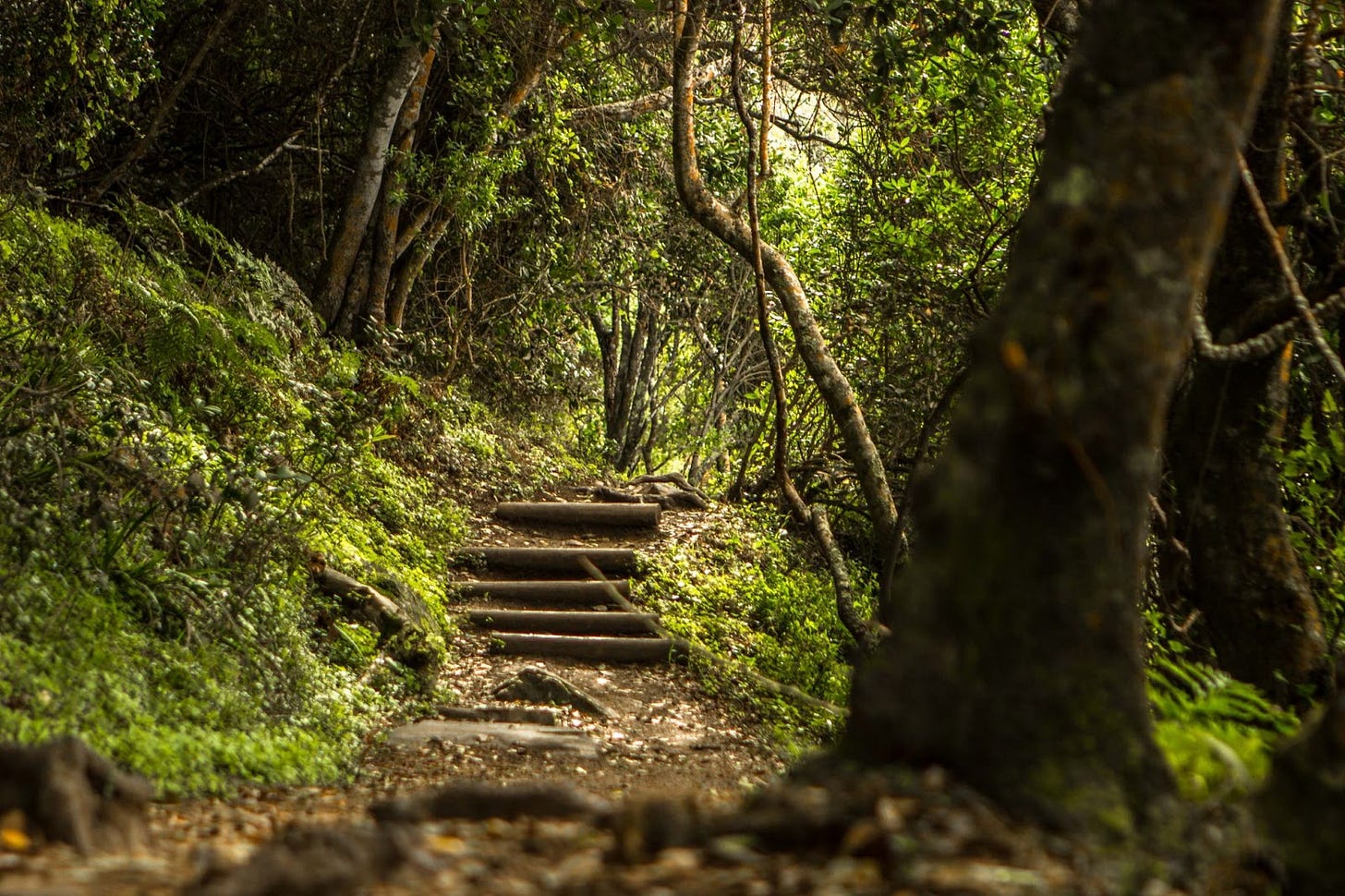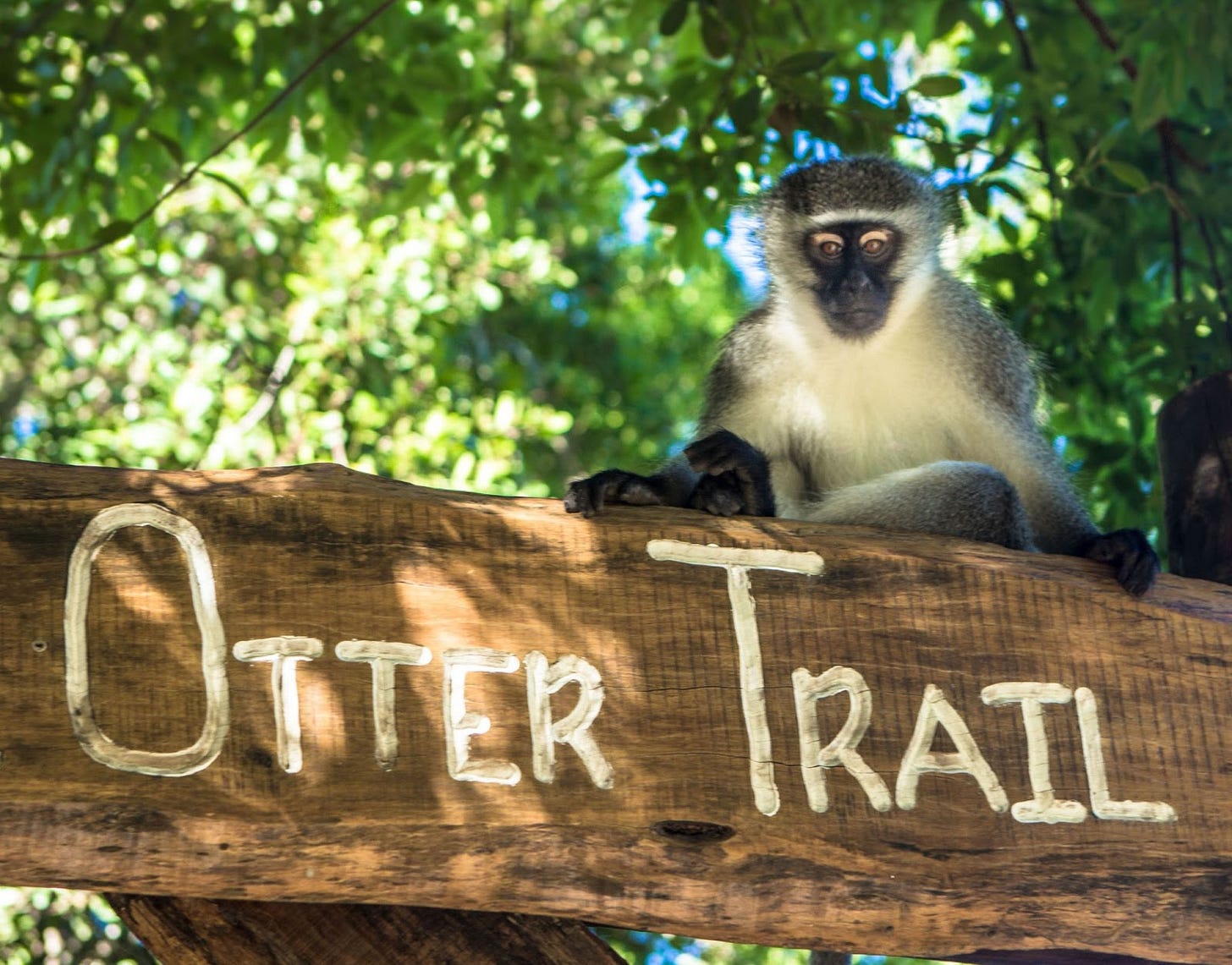In this week of Know Your Nature, we dive into the Garden Route National Park. You know the feeling of damp, cool forests; skyscraping Oteniqua Yellowwoods; the smell of fynbos after a light rainshower; the soft water of chocolate-coloured rivers; and temperate saltiness of ocean swims… The Garden Route National Park is testament to the beauty and diversity of our landscapes here in South Africa.
Hello and welcome to the fourteenth episode of Know Your Nature! A free ReWild Africa newsletter exploring the National Parks of South Africa (and beyond). Know Your Nature aims to showcase off-the-beaten-track parts of Africa, and to encourage the support of our natural heritage #PreservationBeforeRestoration
Garden Route National Park 🐬
The most diverse Biodiversity Hotspot in the world 🌱
The Garden Route National Park was established in 2009 from the amalgamation of the Tsitsikamma and Wilderness National Parks, the Knysna National Lake Area and other state-owned areas of land. It falls within the Cape Floristic Region which, despite being the smallest biosphere, is the most diverse biodiversity hotspot in the world!
The Park contains multiple vegetation biomes such as Mountain Fynbos, Coastal Fynbos, Afro-montane Forest and the Marine herbland, intertidal and subtidal zones. This vast array of unique and indigenous biodiversity has received global recognition and parts of the Garden Route National Park have been listed as UNESCO World Heritage Sites. The Knysna basin is also a key feature in the park because it holds the Knysna Estuary which contains an estimated 42% of all estuarine biodiversity. Estuaries play vital roles in regulating coastal ecosystems, providing nesting, breeding and feeding habitats for many species, and the Knysna Estuary has been ranked first in South Africa for its conservation significance. A must-see is the Knysna Loerie, a vibrant colourful bird that can be spotted as you walk through the forest.
The Tsitsikamma area of the national park was first made a Marine Protected Area in 1964, making it the first Marine National Park in Africa. It is the guardian of a wonderland of marine and intertidal life. As one of the largest Marine Protected Areas in the world, it protects and conserves 11% of South Africa’s South Coast shoreline and provides vital protection for endangered fish species.
The intertwined narrative of Humans and Wild Nature 🦏
The Garden Route National Park is not only home to an abundance of unique flora and fauna, it is also a very significant cultural landscape in South Africa and holds many human histories and stories. With such a diverse and plentiful landscape, it is not surprising that humans have called the area home for over 125 000 years!
There are many culturally and historically significant sites along the Garden Route and recent scientific research has shown that the Southern Cape coast is home to pre-modern humans, whose lineage became Homo sapiens. Shellfish remains from 164 000 years ago and stone tools from 72 000 years ago have been found in caves along the coast.
The Tsitsikamma area of the national park is currently underway with a project to map all Cultural Heritage sites in the park. Using oral histories to recover and interpret information as well as histories from living memory, the aim is to enhance park-community relations by re-enlivening the connection that people have to the land in the area. Local community members, academic institutions, organisations and cultural groups are all involved with this Cultural Mapping project that will ultimately resituate cultural heritage alongside the natural heritage of the park - putting human and nature narratives alongside one another again; as they always have been.
Know your Nature & Protect our natural and cultural heritage 🙌🏽
The Garden Route National Park is a vital part of both our natural as well as our cultural heritage here in South Africa. The human histories it holds, and the biodiversity it cradles makes it pivotal to protect. Invasive plant species, illegal fishing practices and encroaching agricultural practices are some of the issues it faces, but using community-driven measures to reinvigorate relationships and personal connections to the park help to incentivise its ongoing protection.
News from ReWild
We are proud to showcase our tribute film for Bob Scholes who had a significant influence within the fields of climate science, biodiversity conservation and systems ecology.
ReWild Africa has also just produced a short film on ‘Biomimicry - what is Life’. Take a look for a peak into learning not just about nature, but from nature.
ReWild Africa has partnered with the Global Landscape Forum chapter in Cape Town. We are very excited to be joining this knowledge-led platform for sustainable landscapes and look forward to connecting with solutionaries in South Africa and beyond to share knowledge and visions of a more sustainable world.
We have also recently joined the Sustainable Landscape Finance Coalition. This strategic partnership is the beginning of a fruitful relationship between finance/business and conservation in South Africa.
Re:Wild, a new organisation started in partnership with Leonardo Di Caprio, has just pledged $43 million to restore the Galápagos islands. The project will aim to restore Floreana Island, which is home to 54 threatened species. The Floreana mockingbird - first described by Charles Darwin - is one of 13 locally extinct species that will be reintroduced to bolster the ecosystems and make them resilient to biodiversity loss and climate change.
Wild Regards,
Elvi the Elephant 🐘





